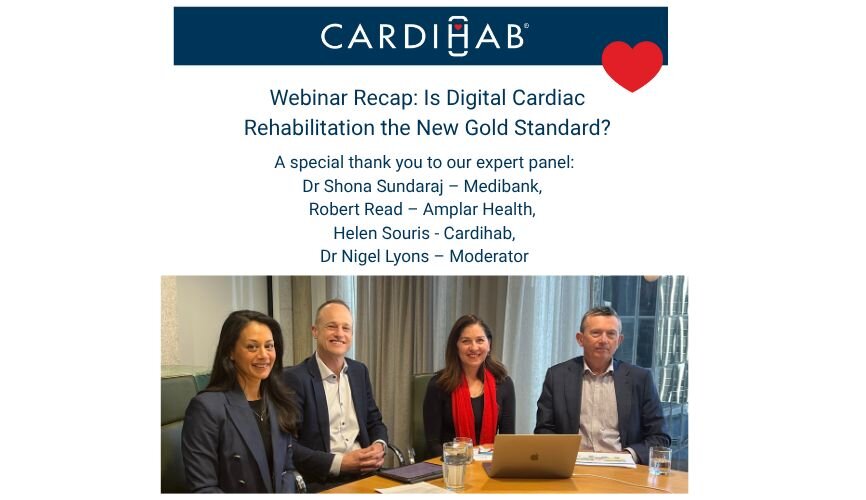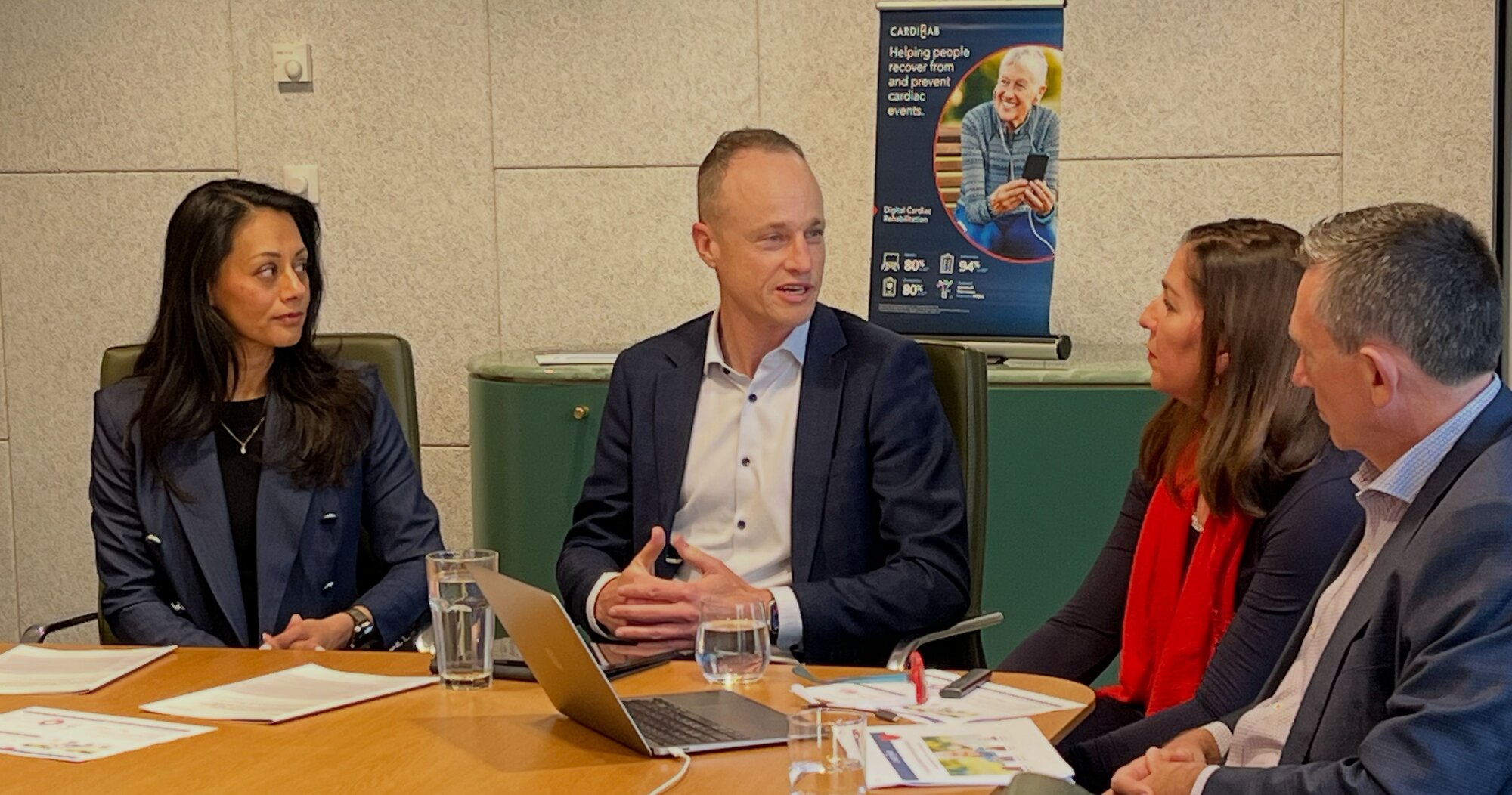Webinar Recap: Is Digital Cardiac Rehabilitation the New Gold Standard?

A huge thank you to everyone who joined us for our recent webinar, “Is Digital Cardiac Rehabilitation the New Gold Standard?” We were thrilled to welcome clinicians, health service leaders, and policymakers from across Australia to explore how digital models are reshaping cardiac rehab delivery—and improving access, outcomes, and equity.
And a special thank you to Dr Shona Sundaraj - Medibank, Robert Read – Amplar Health and Dr Nigel Lyons for moderating this important conversation with our CEO Helen Souris.
Why This Conversation Matters
Cardiac rehabilitation saves lives. Yet today, only around 20% of eligible patients access it, with even lower rates for women, rural residents, and culturally diverse communities.
The majority of people who should access cardiac rehabilitation after hospitalisation for cardiac events can’t access it. AIHW data reports 568,000 hospitalisation each year with a cardiac principal diagnosis, and the estimated number of hospital bed days resulting from no access to cardiac rehabilitation is more than 823,000 hospital bed days.1
Results from a South Australian data linkage study are a little more concerning. 2
“88% of people didn’t get access to rehab. …Less than 10% completed rehab…. Women are 75% less likely to even be referred.”– Helen Souris
This is no longer just a cardiac rehab issue—it’s a system-wide access and equity challenge. And one that demands change.
What We Heard
Our expert panel shared firsthand experience, data, and their perspectives on how digital rehab models are transforming care. Equally the call to action for system wide change to embrace digital cardiac rehabilitation to address the stark gap in care:
Counterfactual snapshot
The cost of not providing CR – is estimated to be in the realm of $2b p.a.

While the study reported equivalent outcomes to face to face, digital models of CR have the ability to significantly improve reach, access and completion rates, indicating significantly greater impact.
“Now that there's documented evidence that virtual care meets the same outcomes as face-to-face, there’s no reason we can't give consumers agency over their choice.” – Dr Shona Sundaraj
Patients want convenience and choice
“We've got to now start to design our systems such that we're enabling autonomy of patient choice as well” – Dr Shona Sundaraj
Equity requires action
“My encouragement is for both public and private systems to really think actively about how they can use tools like this to help their patients connect in the care that they need” – Rob Read
Our bias regarding age or tech literacy—is often the biggest barrier
The barriers to adoption are often related to clinician’s personal biases around whether we think technology is appropriate for the patient or not. Age commonly features as a reason for not offering digital technologies to people, but this is a flawed assumption.
“The patient was 81 and loved the program. Tech wasn’t the issue” – Helen Souris
What will it take?
If we want to positively impact survival, quality of life and reduce the bed day crisis across Australia, we need action and funding to enable high-quality, sustainable care that reaches the people who need it. we must reimagine how we offer rehabilitation. Digital cardiac rehab isn’t a ‘nice to have’—it’s an essential part of modern healthcare.
The evidence is clear and compelling
There is a growing body of evidence in addition to this new publication, including the recent meta-analysis of digital CR studies, that demonstrate clear and compelling evidence that supports this model. 3
“…do these sorts of digital models generally work? The answer is absolutely yes. They reduce all cause hospitalisations, they reduce cardiac-related hospitalisations, they reduce emergency department visits over and above all the other benefits.” – Helen Souris.
What’s Next
Eligible patients can be referred directly to our program via a range of providers - see our provider page
If your organisation is looking to expand access to cardiac rehab, improve outcomes, and meet demand without adding pressure to existing services—we’d love to talk.
Contact us to learn more about our digital cardiac rehab platform.
Together, let’s make cardiac rehab accessible for every heart that needs it.
References
2. Beleigoli, A., et al. (2024). Clinical effectiveness and utilisation of cardiac rehabilitation after hospital discharge: Data linkage analysis of 84,064 eligible discharged patients (2016–2021). Heart, Lung and Circulation, 33(7), 1036–1045. https://doi.org/10.1016/j.hlc.2024.01.018